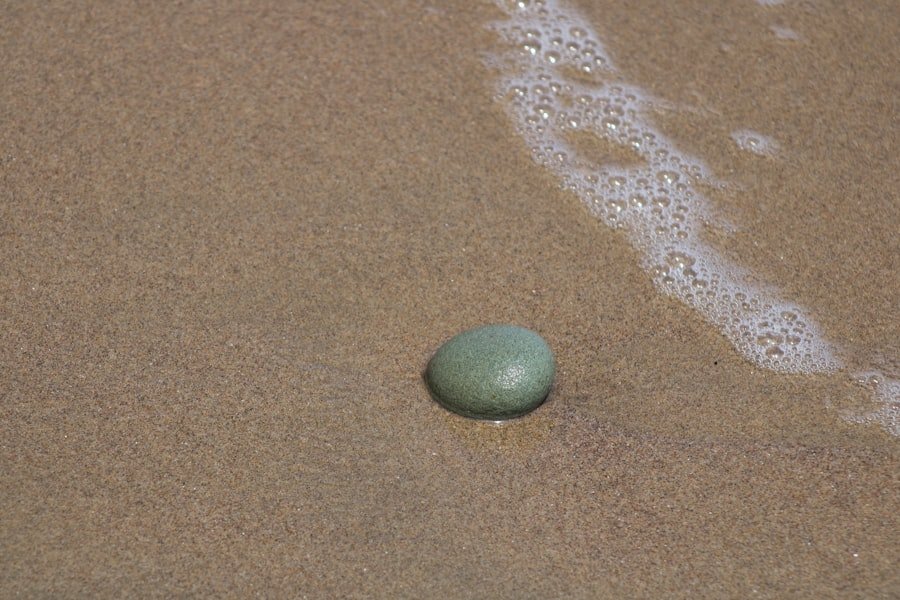In recent years, we have witnessed a remarkable shift in how creative projects are funded, thanks in large part to platforms like Kickstarter. This innovative crowdfunding platform has transformed the landscape for entrepreneurs, artists, and inventors alike, allowing them to connect directly with potential backers who share their vision. By leveraging the power of the internet and social media, Kickstarter has democratized the funding process, enabling individuals to raise capital for their ideas without relying on traditional investors or financial institutions.
As we explore the rise of crowdfunding, it becomes clear that Kickstarter has played a pivotal role in this evolution, fostering a culture of collaboration and support among creators and their audiences. The concept of crowdfunding is not entirely new; however, Kickstarter has popularized it in a way that resonates with a modern audience. We have seen countless projects come to life through the platform, ranging from innovative gadgets to artistic endeavors.
The success stories emerging from Kickstarter have inspired many to take the plunge into entrepreneurship, knowing that they can rally support from a community of like-minded individuals. This shift has not only empowered creators but has also given backers a sense of ownership in the projects they choose to support, creating a unique bond between creators and their audiences. As we delve into some of the most notable projects that have emerged from Kickstarter, we will uncover the impact this platform has had on various industries and the creative landscape as a whole.
Key Takeaways
- Kickstarter is a popular crowdfunding platform that has revolutionized the way people fund creative projects.
- Pebble Time was one of the first major success stories on Kickstarter, paving the way for other tech innovations to be crowdfunded.
- Exploding Kittens became a sensation on Kickstarter, proving that even a simple card game can capture the public's imagination and support.
- The Coolest Cooler reimagined the traditional cooler and became one of the most funded projects on Kickstarter.
- The Veronica Mars Movie Project demonstrated the power of fan support in bringing beloved stories to the big screen through crowdfunding.
Pebble Time: The Smartwatch that Started it All
Introduction to Pebble Time
The campaign was a resounding success, raising over $20 million from more than 78,000 backers, making it one of the most funded projects in Kickstarter history. What made Pebble Time particularly appealing was its commitment to open-source development. We were drawn to the idea that developers could create apps and watch faces tailored to individual preferences, fostering a vibrant ecosystem around the device.
The Power of Open-Source Development
This approach not only enhanced user experience but also encouraged a sense of community among Pebble users. The open-source nature of Pebble Time allowed developers to push the boundaries of what was possible with the device, creating a wide range of innovative apps and watch faces that catered to diverse user needs.
Impact and Legacy of Pebble Time
As we reflect on the impact of Pebble Time, it becomes evident that this smartwatch not only set the stage for future wearable technology but also demonstrated the power of crowdfunding in bringing innovative ideas to life. The success of Pebble Time paved the way for other wearable devices and inspired a new generation of tech enthusiasts and developers to explore the possibilities of smartwatch technology.
Exploding Kittens: A Card Game Sensation

In the realm of tabletop gaming, few projects have achieved the level of success that Exploding Kittens has experienced. Launched in 2015 by a team of game developers and artists, this quirky card game quickly captured our attention with its humorous illustrations and simple yet engaging gameplay. The campaign raised an astonishing $8.7 million from over 219,000 backers, making it one of the most funded games on Kickstarter.
What resonated with us was not just the game's unique concept but also its ability to bring people together for a fun and lighthearted experience. Exploding Kittens exemplifies how crowdfunding can empower creators to take risks and explore unconventional ideas. The game's success can be attributed to its clever marketing strategy, which included engaging videos and relatable humor that appealed to a wide audience.
As we played Exploding Kittens with friends and family, we realized that it was more than just a card game; it was a social experience that fostered laughter and connection. The phenomenon surrounding Exploding Kittens serves as a testament to the potential of crowdfunding to elevate creative projects and create lasting memories for those who partake in them.
The Coolest Cooler: Reinventing the Cooler
| Metrics | Data |
|---|---|
| Number of backers | 62,642 |
| Amount pledged | 13,285,226 |
| Number of colors available | 5 |
| Number of features | 20+ |
| Estimated delivery date | July 2015 |
When we think about outdoor gatherings and summer barbecues, coolers are often an essential item on our checklist. However, The Coolest Cooler took this humble accessory to new heights with its innovative design and multifunctional features. Launched on Kickstarter in 2014, this project aimed to revolutionize the way we think about coolers by incorporating features like a built-in blender, Bluetooth speakers, USB chargers, and even LED lights.
The campaign was met with overwhelming enthusiasm, raising over $13 million from more than 62,000 backers. The Coolest Cooler exemplifies how crowdfunding can breathe new life into everyday products by infusing them with creativity and practicality. As we explored its features, we were impressed by how it catered to our needs as outdoor enthusiasts while also enhancing our overall experience.
The project not only showcased the potential for innovation within traditional markets but also highlighted the importance of understanding consumer desires. While challenges arose during production and fulfillment, The Coolest Cooler remains a prime example of how crowdfunding can inspire entrepreneurs to think outside the box and create products that resonate with consumers.
The Veronica Mars Movie Project: A Fan-Funded Film
The Veronica Mars Movie Project is a remarkable case study in how crowdfunding can empower fans to take an active role in bringing their favorite stories to life. After the beloved television series was canceled in 2007, fans rallied around the idea of reviving it through a feature film. In 2013, creator Rob Thomas launched a Kickstarter campaign with the goal of raising $2 million to fund the project.
To our delight, the campaign exceeded expectations, raising over $5.7 million from more than 91,000 backers.
As we watched Veronica Mars return to the screen, we felt a sense of pride knowing that our contributions had played a role in making it happen.
The success of this campaign opened doors for other creators looking to fund passion projects while simultaneously fostering a deeper connection between fans and their favorite franchises. It showcased how crowdfunding can bridge the gap between creators and audiences, allowing us to become active participants in the storytelling process.
OUYA: The Open-Source Gaming Console

Accessibility and Creativity
As we explored OUYA's potential, we were excited by its promise of accessibility and creativity within the gaming community. The console allowed developers to create games without facing the barriers typically associated with traditional gaming platforms.
Challenges and Legacy
However, despite its initial success and enthusiastic backing, OUYA faced challenges in maintaining momentum after its launch. While it ultimately struggled to compete with established consoles, OUYA's legacy lies in its attempt to disrupt the gaming industry and inspire future innovations in open-source gaming.
Lasting Impact
Although OUYA may not have achieved the level of success it had hoped for, its impact on the gaming industry cannot be overstated. Its innovative approach paved the way for future open-source gaming platforms, leaving a lasting legacy in the world of gaming.
The Pebble 2: A Second Success for the Smartwatch Company
Following the success of Pebble Time, it was only natural for us to anticipate what Pebble would do next. Enter Pebble 2—a refined version of its predecessor that aimed to build upon its legacy while addressing user feedback. Launched on Kickstarter in 2016, Pebble 2 featured improved fitness tracking capabilities, heart rate monitoring, and enhanced battery life—all while maintaining its signature customizable interface.
Once again, we were captivated by the campaign's potential and rallied behind it as it raised over $12 million from more than 60,000 backers. The launch of Pebble 2 reaffirmed our belief in the brand's commitment to innovation and user satisfaction. As we donned our new smartwatches, we appreciated how Pebble had listened to its community and incorporated their suggestions into this iteration.
This project not only solidified Pebble's position as a leader in wearable technology but also showcased how crowdfunding can facilitate ongoing dialogue between creators and their supporters. The success of Pebble 2 further demonstrated that when companies prioritize user feedback and engagement, they can cultivate lasting relationships with their audiences.
The Travel Tripod: A Game-Changing Camera Accessory
In an age where photography is more accessible than ever thanks to smartphones and digital cameras, finding ways to enhance our photography experience has become increasingly important. The Travel Tripod emerged as a solution for photographers seeking portability without sacrificing stability or functionality. Launched on Kickstarter in 2019 by a team of passionate photographers and engineers, this compact tripod promised to be lightweight yet sturdy enough for various shooting conditions.
The campaign resonated with us as it raised over $1 million from thousands of backers who shared our passion for capturing moments on-the-go. The Travel Tripod exemplifies how crowdfunding can empower creators to develop products that address specific pain points within niche markets while fostering a sense of community among users who share similar interests.
In conclusion, our journey through some of Kickstarter's most notable projects reveals not only the platform's transformative impact on funding creative endeavors but also its ability to foster connections between creators and their audiences. From groundbreaking smartwatches like Pebble Time and Pebble 2 to innovative games like Exploding Kittens and fan-funded films like Veronica Mars, each project showcases how crowdfunding has reshaped industries and inspired countless individuals to pursue their passions. As we continue to witness new ideas emerge through platforms like Kickstarter, we are reminded of the power of collaboration and community in bringing dreams to life.
FAQs
What are Kickstarter campaigns?
Kickstarter campaigns are projects or products that are funded through a crowdfunding platform called Kickstarter. Creators set a funding goal and a deadline, and backers can pledge money to help bring the project to life.
What are some of the top Kickstarter campaigns?
Some of the top Kickstarter campaigns include the Pebble Time smartwatch, the Coolest Cooler, the Exploding Kittens card game, and the Pebble 2 smartwatch. These campaigns raised millions of dollars and gained widespread attention.
How do Kickstarter campaigns work?
Creators launch a campaign on Kickstarter by setting a funding goal and a deadline. Backers can then pledge money to support the project. If the funding goal is met by the deadline, the project is funded and the creator receives the pledged funds to bring their project to life.
What are the benefits of backing a Kickstarter campaign?
Backers of Kickstarter campaigns often receive rewards or perks for their support, such as early access to the product, limited edition items, or special recognition. Additionally, backers get to be a part of bringing a new project or product to life.
What happens if a Kickstarter campaign doesn't reach its funding goal?
If a Kickstarter campaign does not reach its funding goal by the deadline, the project is not funded and backers are not charged for their pledges. The creator does not receive any of the pledged funds, and the project does not move forward.



